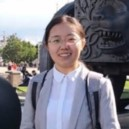Remote Sensing and GIS for Monitoring Urbanization and Urban Health
A special issue of Remote Sensing (ISSN 2072-4292). This special issue belongs to the section "Environmental Remote Sensing".
Deadline for manuscript submissions: 31 July 2024 | Viewed by 17862
Special Issue Editors
Interests: big health; spatial data analysis; urban health; remote sensing applications; temporal and spatial perception calculations
Interests: image classification; spatial analysis; deep learning; sample learning; urban landscape
Special Issues, Collections and Topics in MDPI journals
Interests: health geography; spatial epidemiology; spatial life course epidemiology; urban health; GIS; remote sensing; artificial intelligence
Special Issues, Collections and Topics in MDPI journals
Interests: urban health and wellbeing; ecological and institutional economics of social and ecological system
Special Issues, Collections and Topics in MDPI journals
Interests: urban functional zone classification; traffic congestion; traffic-related air pollution; surface energy balance; global mapping on GEE
Special Issue Information
Dear Colleagues,
Urbanization is one of the leading global trends of the 21st century and has a significant impact on health. Many people living in cities have to deal with inadequate housing and transport, poor sanitation and waste management, and environmental pollution. Noise, water and soil contamination, a lack of space for walking, urban heat island and extreme weather driven by climate change are all harmful to the health of city residents. With the increasing abundance of remote sensing data, related GIS spatial analysis technologies are emerging endlessly. These data and technologies are increasingly used in urban and health research.
The aim of this Special Issue is to present the latest research findings and ideas with respect to the application of remote sensing and GIS in monitoring urbanization and urban health to readers globally. The inclusion of these research studies on this specific theme in our journal will provide valuable information for urbanization and urban health based on the application of remote sensing and GIS. Case studies, innovative methods, system reviews and perspectives are all welcomed.
Prof. Dr. Xinhu Li
Prof. Dr. Shihong Du
Prof. Dr. Peng Jia
Prof. Dr. Franz W. Gatzweiler
Dr. Jinchao Song
Guest Editors
Manuscript Submission Information
Manuscripts should be submitted online at www.mdpi.com by registering and logging in to this website. Once you are registered, click here to go to the submission form. Manuscripts can be submitted until the deadline. All submissions that pass pre-check are peer-reviewed. Accepted papers will be published continuously in the journal (as soon as accepted) and will be listed together on the special issue website. Research articles, review articles as well as short communications are invited. For planned papers, a title and short abstract (about 100 words) can be sent to the Editorial Office for announcement on this website.
Submitted manuscripts should not have been published previously, nor be under consideration for publication elsewhere (except conference proceedings papers). All manuscripts are thoroughly refereed through a single-blind peer-review process. A guide for authors and other relevant information for submission of manuscripts is available on the Instructions for Authors page. Remote Sensing is an international peer-reviewed open access semimonthly journal published by MDPI.
Please visit the Instructions for Authors page before submitting a manuscript. The Article Processing Charge (APC) for publication in this open access journal is 2700 CHF (Swiss Francs). Submitted papers should be well formatted and use good English. Authors may use MDPI's English editing service prior to publication or during author revisions.
Keywords
- urbanization and health both regionally and globally
- urban landscape, urban ecological system and health
- territorial spatial planning and health city
- urbanization speed and acceleration, spatial-temporal analysis of urbanization
- green space/blue space/gray space remote sensing monitoring
- map of urban development and evolution
- urban environment changes and health effects
- remote sensing GIS big data and urban health
- remote sensing and GIS monitoring, simulating and predicting of infectious diseases, such as COVID-19









